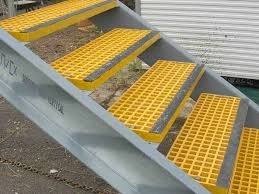
-
 Afrikaans
Afrikaans -
 Albanian
Albanian -
 Amharic
Amharic -
 Arabic
Arabic -
 Armenian
Armenian -
 Azerbaijani
Azerbaijani -
 Basque
Basque -
 Belarusian
Belarusian -
 Bengali
Bengali -
 Bosnian
Bosnian -
 Bulgarian
Bulgarian -
 Catalan
Catalan -
 Cebuano
Cebuano -
 China
China -
 China (Taiwan)
China (Taiwan) -
 Corsican
Corsican -
 Croatian
Croatian -
 Czech
Czech -
 Danish
Danish -
 Dutch
Dutch -
 English
English -
 Esperanto
Esperanto -
 Estonian
Estonian -
 Finnish
Finnish -
 French
French -
 Frisian
Frisian -
 Galician
Galician -
 Georgian
Georgian -
 German
German -
 Greek
Greek -
 Gujarati
Gujarati -
 Haitian Creole
Haitian Creole -
 hausa
hausa -
 hawaiian
hawaiian -
 Hebrew
Hebrew -
 Hindi
Hindi -
 Miao
Miao -
 Hungarian
Hungarian -
 Icelandic
Icelandic -
 igbo
igbo -
 Indonesian
Indonesian -
 irish
irish -
 Italian
Italian -
 Japanese
Japanese -
 Javanese
Javanese -
 Kannada
Kannada -
 kazakh
kazakh -
 Khmer
Khmer -
 Rwandese
Rwandese -
 Korean
Korean -
 Kurdish
Kurdish -
 Kyrgyz
Kyrgyz -
 Lao
Lao -
 Latin
Latin -
 Latvian
Latvian -
 Lithuanian
Lithuanian -
 Luxembourgish
Luxembourgish -
 Macedonian
Macedonian -
 Malgashi
Malgashi -
 Malay
Malay -
 Malayalam
Malayalam -
 Maltese
Maltese -
 Maori
Maori -
 Marathi
Marathi -
 Mongolian
Mongolian -
 Myanmar
Myanmar -
 Nepali
Nepali -
 Norwegian
Norwegian -
 Norwegian
Norwegian -
 Occitan
Occitan -
 Pashto
Pashto -
 Persian
Persian -
 Polish
Polish -
 Portuguese
Portuguese -
 Punjabi
Punjabi -
 Romanian
Romanian -
 Russian
Russian -
 Samoan
Samoan -
 Scottish Gaelic
Scottish Gaelic -
 Serbian
Serbian -
 Sesotho
Sesotho -
 Shona
Shona -
 Sindhi
Sindhi -
 Sinhala
Sinhala -
 Slovak
Slovak -
 Slovenian
Slovenian -
 Somali
Somali -
 Spanish
Spanish -
 Sundanese
Sundanese -
 Swahili
Swahili -
 Swedish
Swedish -
 Tagalog
Tagalog -
 Tajik
Tajik -
 Tamil
Tamil -
 Tatar
Tatar -
 Telugu
Telugu -
 Thai
Thai -
 Turkish
Turkish -
 Turkmen
Turkmen -
 Ukrainian
Ukrainian -
 Urdu
Urdu -
 Uighur
Uighur -
 Uzbek
Uzbek -
 Vietnamese
Vietnamese -
 Welsh
Welsh -
 Bantu
Bantu -
 Yiddish
Yiddish -
 Yoruba
Yoruba -
 Zulu
Zulu
Effective Solutions for Air Pollution Control Using FRP Scrubber Technology
Understanding FRP Scrubbers An Essential Tool for Industrial Emission Control
In today’s industrial landscape, environmental regulations are becoming increasingly strict. Industries are often tasked with finding solutions to minimize their environmental impact while continuing to operate efficiently. One of the essential tools that have emerged to tackle this challenge is the FRP scrubber, a critical component in pollution control systems.
FRP, or Fiber-Reinforced Plastic, scrubbers are filtration devices used to remove pollutants, such as gases and particulate matter, from industrial exhaust streams. Their design is rooted in advanced materials technology, which brings several advantages over traditional scrubbers made from metals or other materials. The use of FRP materials allows for a lighter weight, enhanced corrosion resistance, and a lower overall maintenance requirement, making them a cost-effective choice for many industries.
Understanding FRP Scrubbers An Essential Tool for Industrial Emission Control
One of the significant advantages of using FRP scrubbers is their exceptional durability and resistance to chemical attack. Many industries, such as chemical manufacturing, food processing, and waste treatment, work with challenging substances that can quickly corrode conventional scrubber materials. The FRP composition can withstand these harsh conditions, thereby extending the operational lifespan of the scrubber and reducing the frequency of replacements.
frp scrubber

Moreover, FRP scrubbers are highly customizable. They can be fabricated to meet specific requirements regarding size, shape, and performance, enabling industries to integrate them seamlessly into existing systems. This adaptability allows for greater efficiency in emission control that aligns with the unique needs of an operation, whether it’s a small workshop or a large manufacturing facility.
Environmental sustainability is a key consideration for modern industries, and employing FRP scrubbers is a proactive step toward minimizing harmful emissions. By efficiently removing contaminants from exhaust streams, companies can not only comply with stringent regulations but also contribute positively to the environment. This not only bolsters corporate image and compliance credentials but also often results in long-term financial savings through reduction in fines and environmental remediation costs.
Furthermore, as technology continues to advance, the efficiency of FRP scrubbers is expected to improve. Innovations in material science, coupled with enhanced understanding of chemical interactions in scrubbing processes, suggest that future scrubbers will be even more effective at capturing a broader range of pollutants with minimal energy consumption.
In conclusion, FRP scrubbers represent a significant advancement in emission control technology, offering industries a reliable, efficient, and environmentally friendly solution for addressing air quality issues. As the push for sustainability and regulatory compliance intensifies, the adoption of FRP scrubbers will likely grow, making them a cornerstone of modern industrial operations aimed at achieving cleaner air and a healthier planet. By investing in such technologies, industries not only safeguard their future but also take a vital step towards ecological responsibility.
Latest news
-
Exploring the Benefits of Top Hammer Drifter Rods for Enhanced Drilling PerformanceNewsJun.10,2025
-
High-Precision Fiberglass Winding Machine for GRP/FRP Pipe Production – Reliable & Efficient SolutionsNewsJun.10,2025
-
FRP Pipes & Fittings for Shipbuilding - Corrosion-Resistant & LightweightNewsJun.09,2025
-
Premium FRP Flooring Solutions Durable & Slip-ResistantNewsJun.09,2025
-
Premium Fiberglass Rectangular Tanks Durable & Lightweight SolutionNewsJun.09,2025
-
Tapered Drill String Design Guide Durable Performance & UsesNewsJun.09,2025









